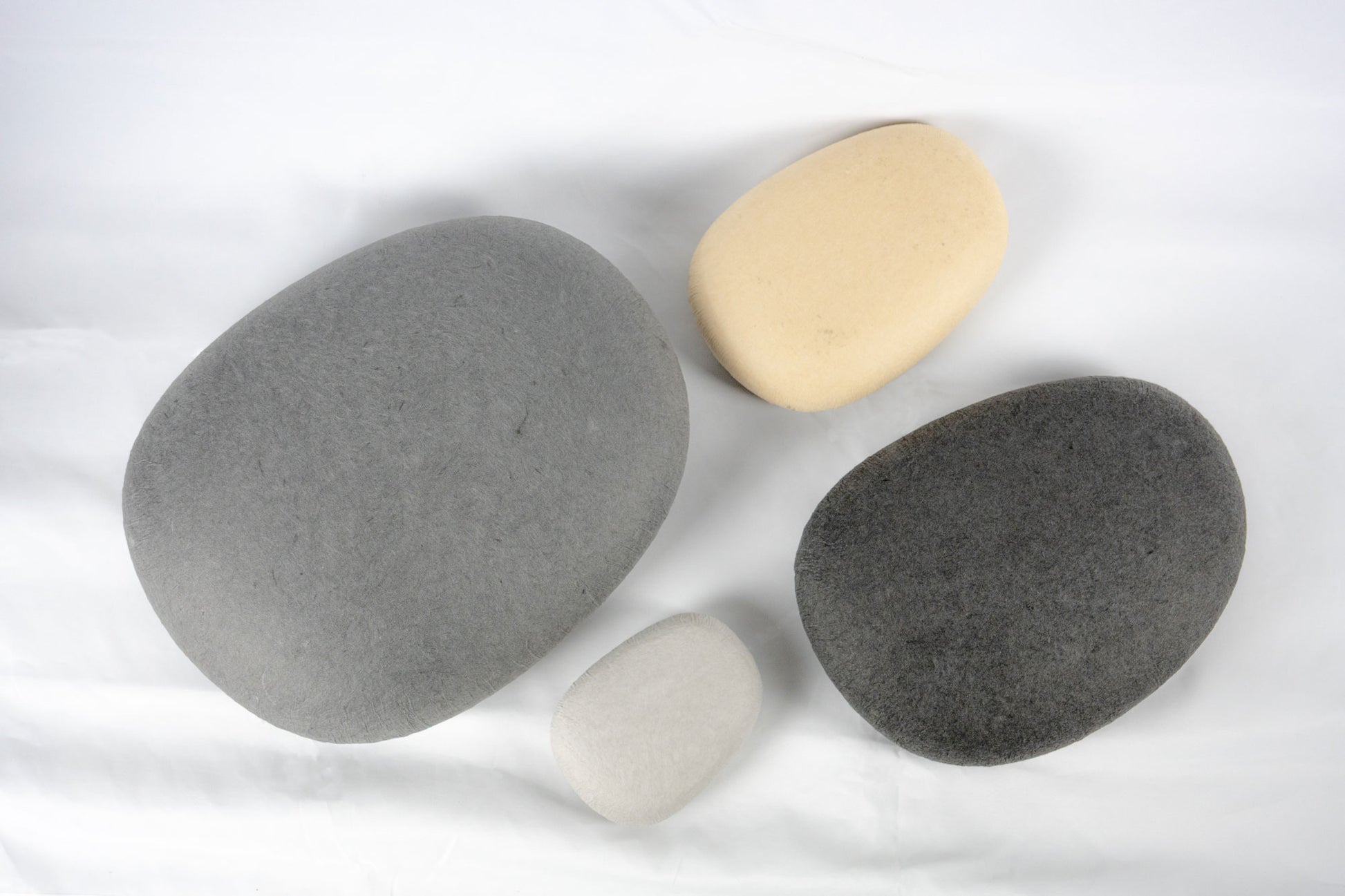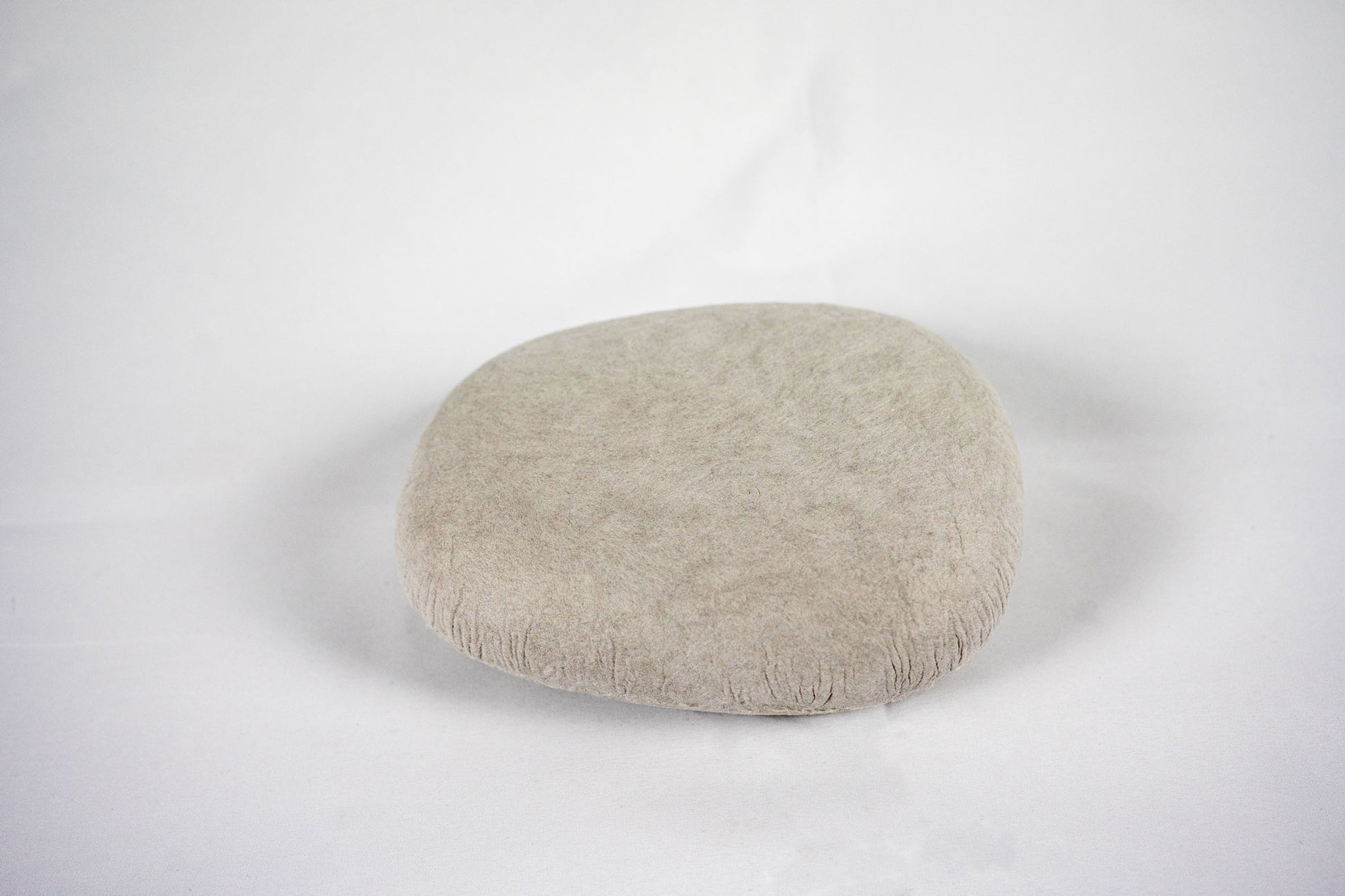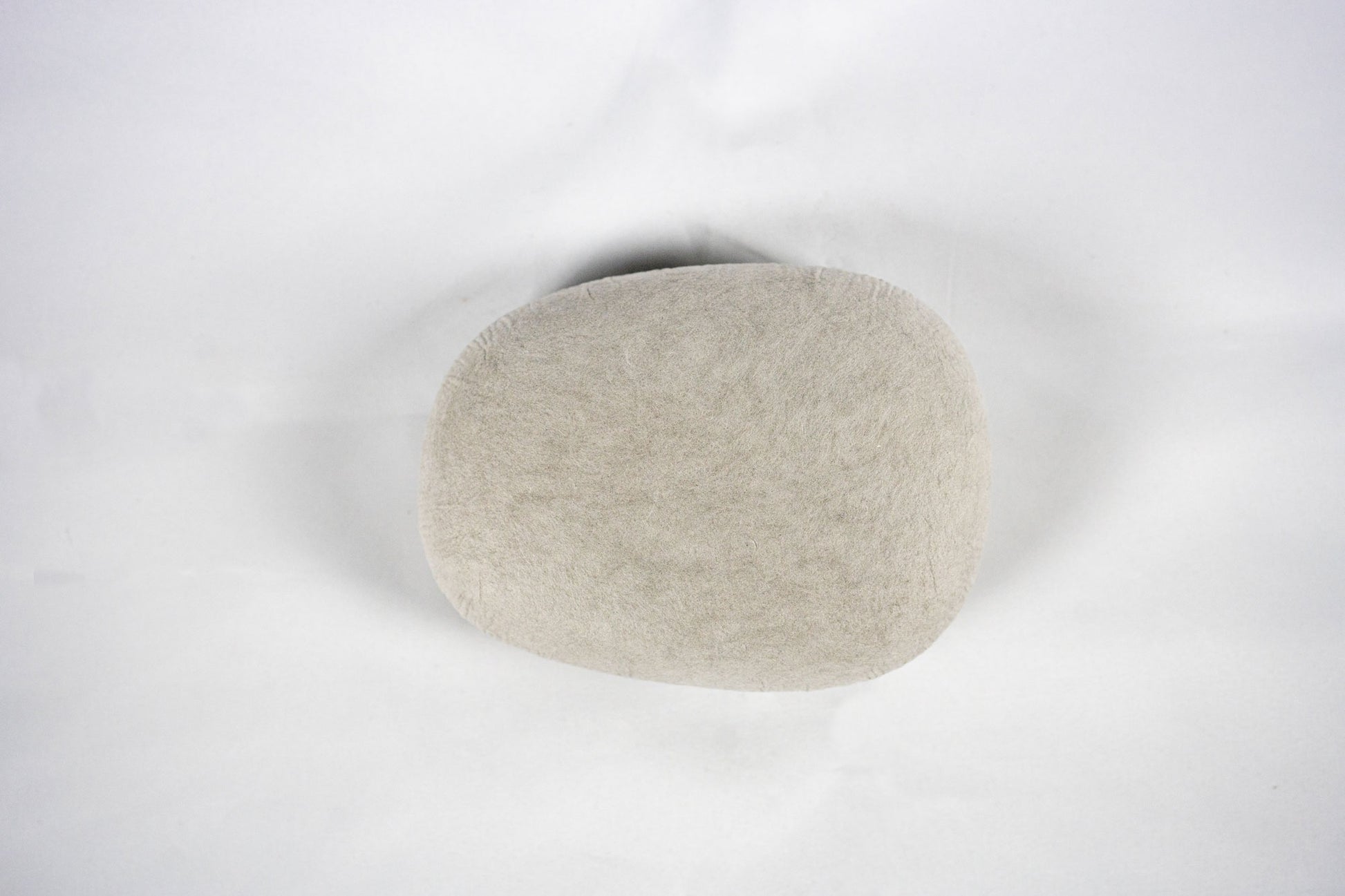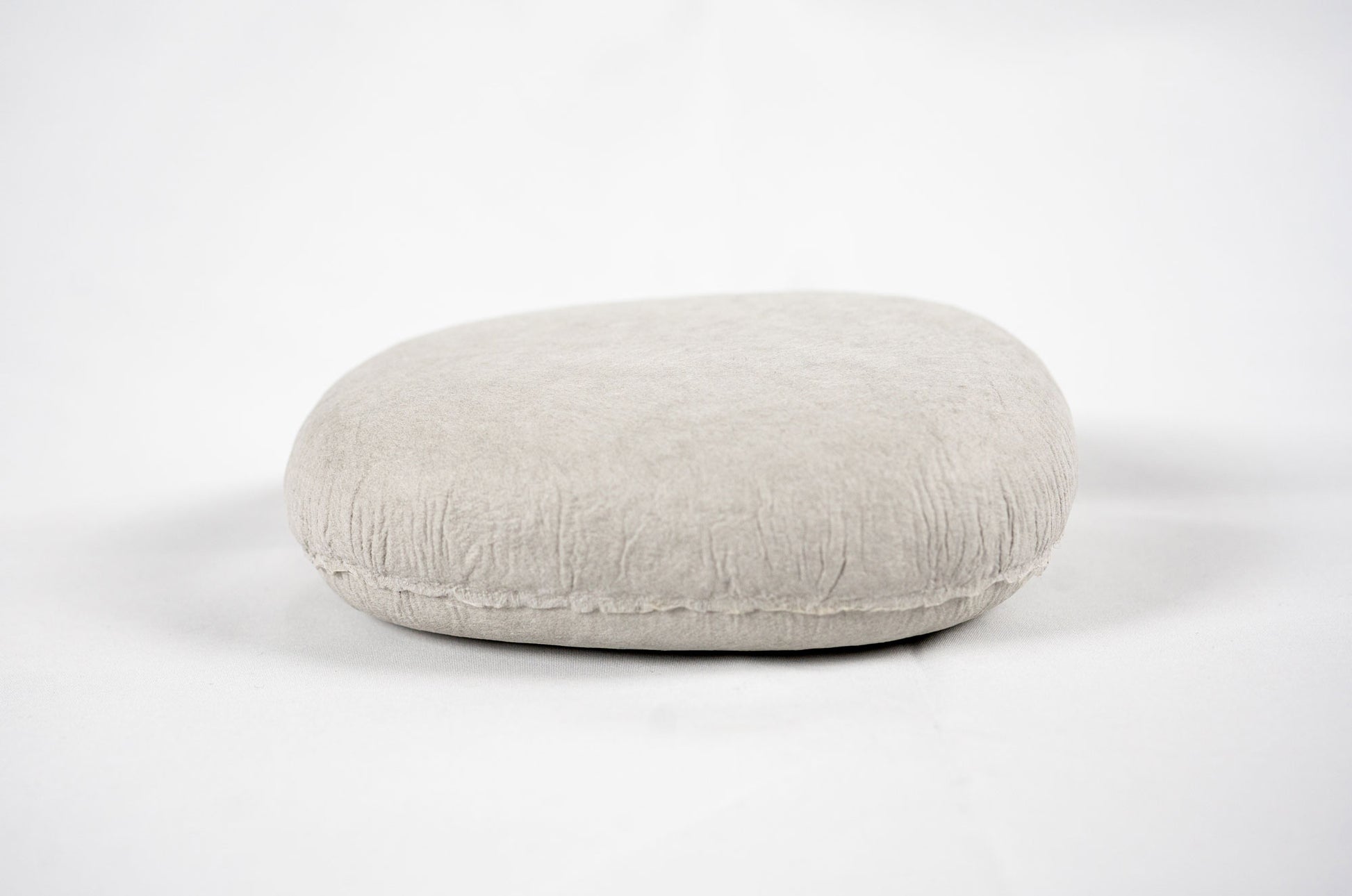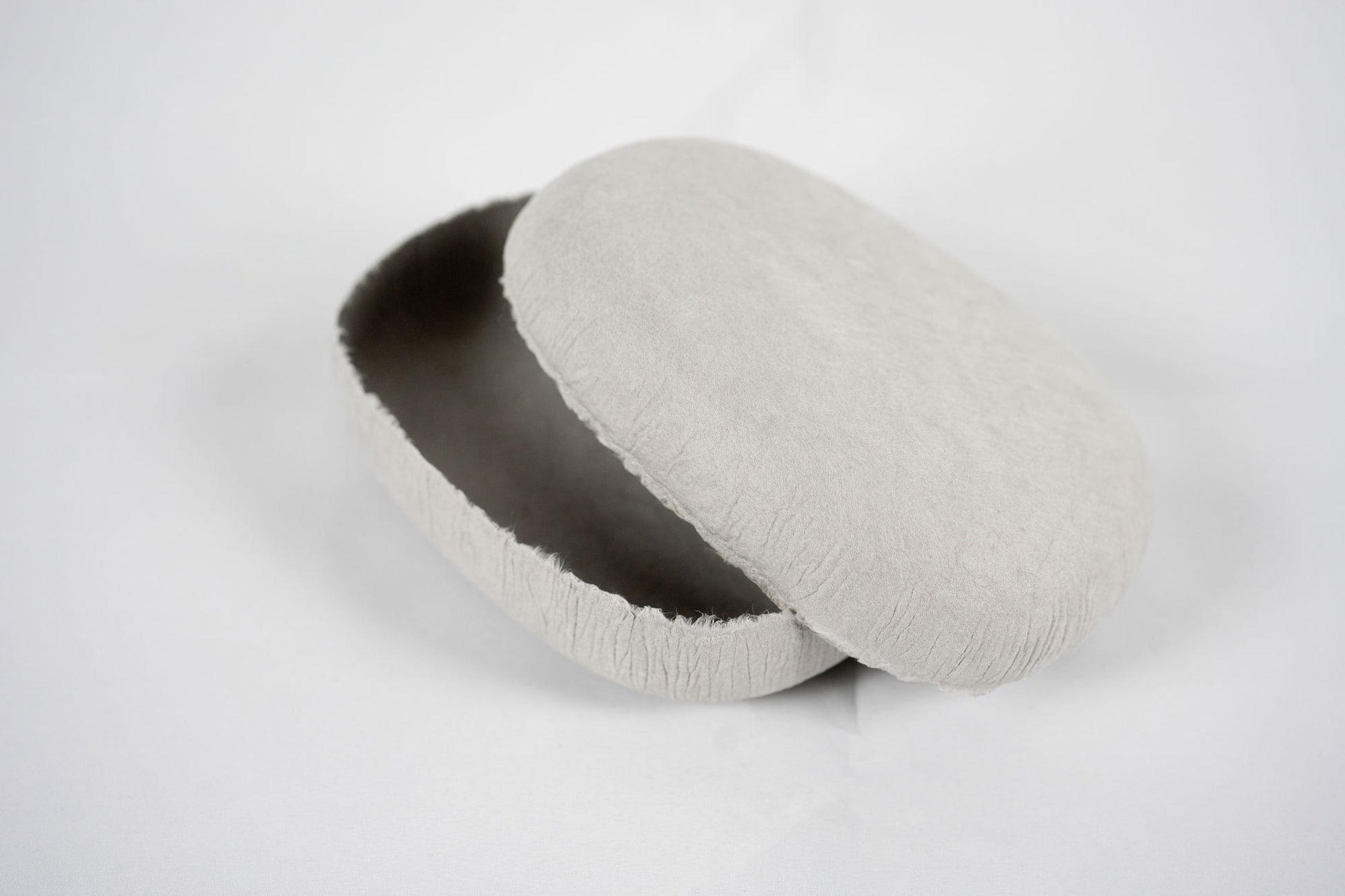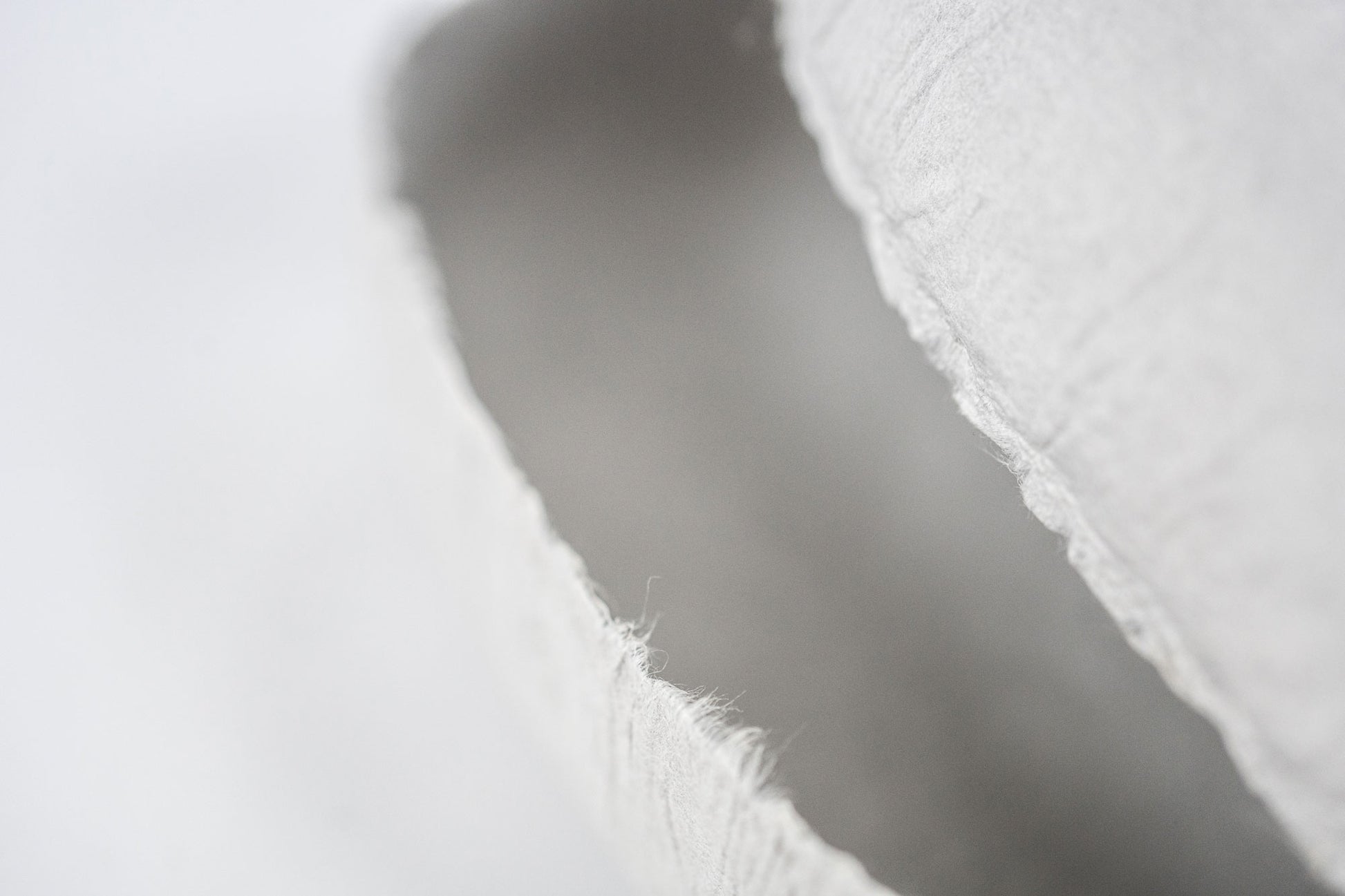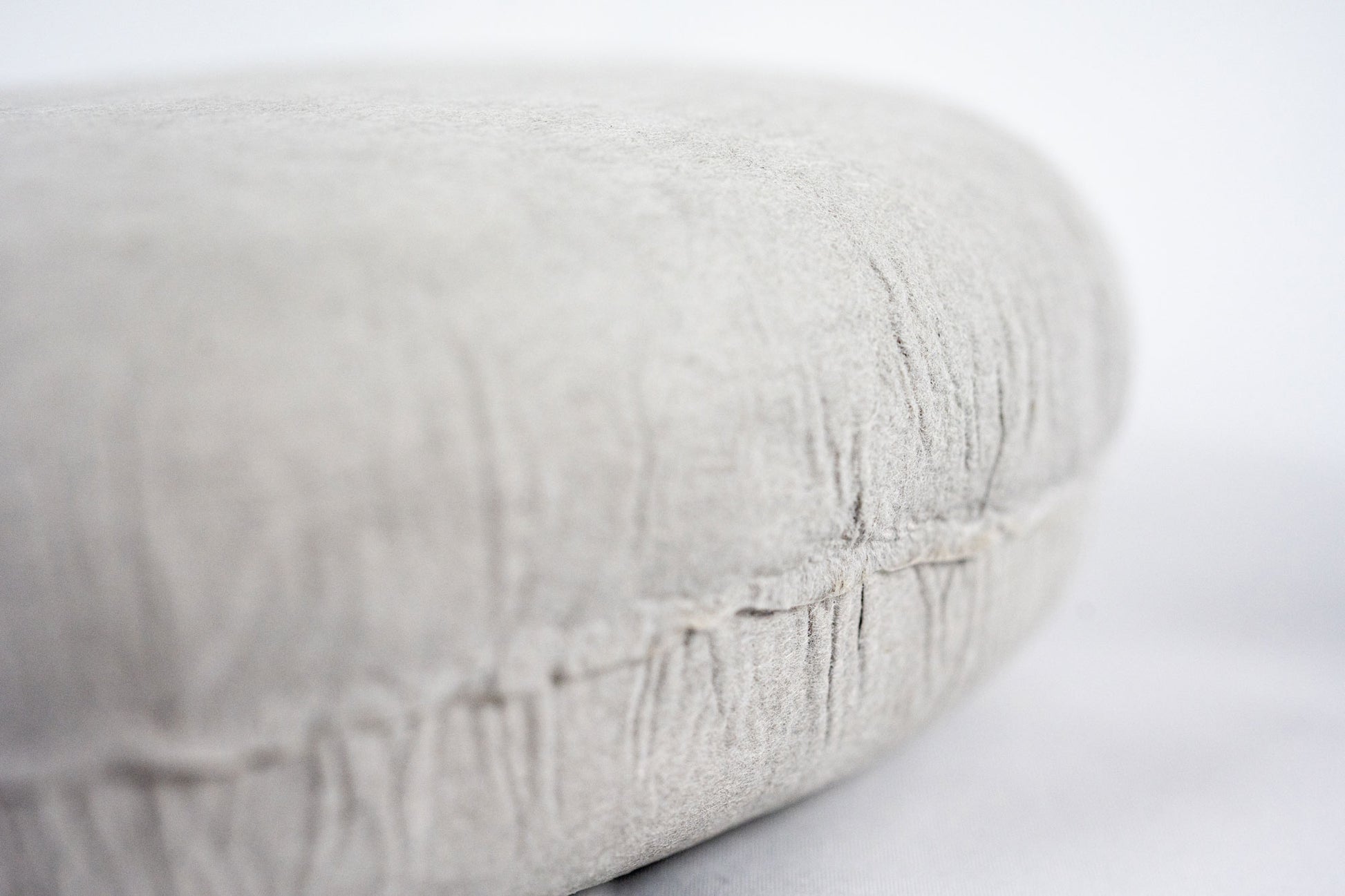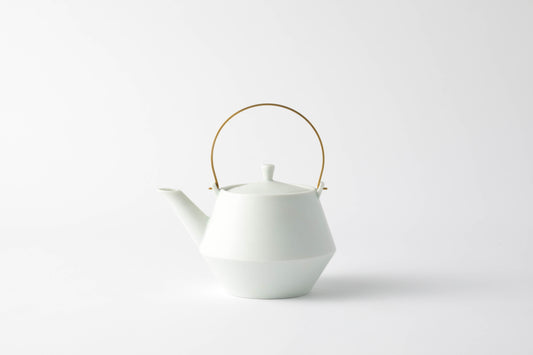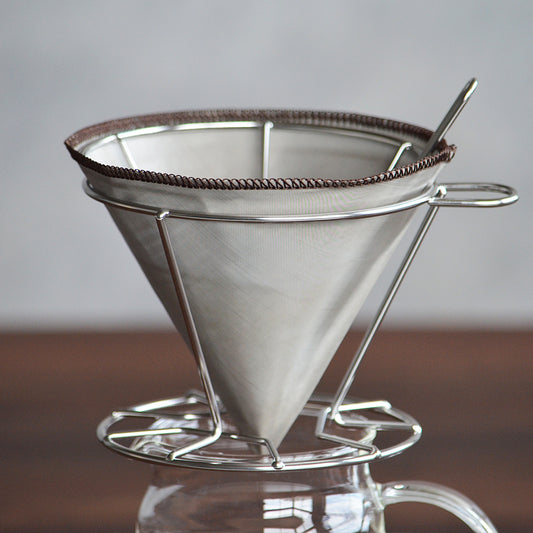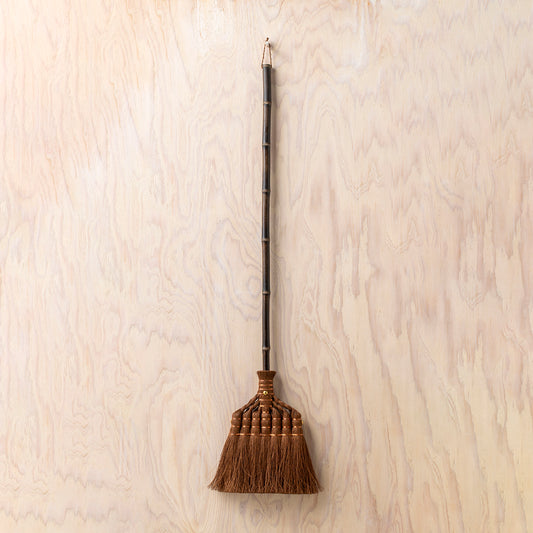有限会社やなせ和紙
Harukami [cobble] (S)
Harukami [cobble] (S)
Supplementary product information
Supplementary product information
Production area: Fukui Prefecture
Size:
・(Height) 46mm
・(Width) 156mm
・(Depth) 120mm
Material: Washi (Japanese paper) (main raw material is kozo)
Weight: 30g
Usage precautions:
・Since the product is handmade, size and color may vary slightly
・Do not place in areas exposed to direct air conditioning or heating
・Do not place wet or moisture-containing items inside
・Keep away from fire and heat sources
Couldn't load pickup availability
Each sheet of washi paper, carefully crafted one by one, has been fashioned into a box with a durable yet gentle texture. The natural, soft rounded form, reminiscent of small stones scattered along a riverbank, exists comfortably in living spaces whether stacked, arranged in rows, or simply placed alone.
![Harukami [cobble] (S)](http://rashiku.store/cdn/shop/products/echizen-washi-case-7_4927f9bc-dfc2-4533-a01d-abd77dcca476.jpg?v=1679641586&width=1445)
![Harukami [cobble] (S)](http://rashiku.store/cdn/shop/products/echizen-washi-case-23.jpg?v=1679641586&width=1445)
![Harukami [cobble] (S)](http://rashiku.store/cdn/shop/products/echizen-washi-case-24_218171fa-0b50-41cf-b2da-35e27e8557b6.jpg?v=1679641586&width=1445)
![Harukami [cobble] (S)](http://rashiku.store/cdn/shop/products/echizen-washi-case-25_f44960db-4151-4c0b-a8d8-64ebd60c5bc2.jpg?v=1679641586&width=1445)
![Harukami [cobble] (S)](http://rashiku.store/cdn/shop/products/echizen-washi-case-26_582ce0d2-c493-4e81-aaa8-0152c1a84467.jpg?v=1679641586&width=1445)
![Harukami [cobble] (S)](http://rashiku.store/cdn/shop/products/echizen-washi-case-27_dab0a096-b6e9-4d4f-b0bf-ad112e2c56a8.jpg?v=1679641586&width=1445)
![Harukami [cobble] (S)](http://rashiku.store/cdn/shop/products/echizen-washi-case-28_a08c108d-85b5-40dd-ace6-1abd185a19b0.jpg?v=1679641586&width=1445)
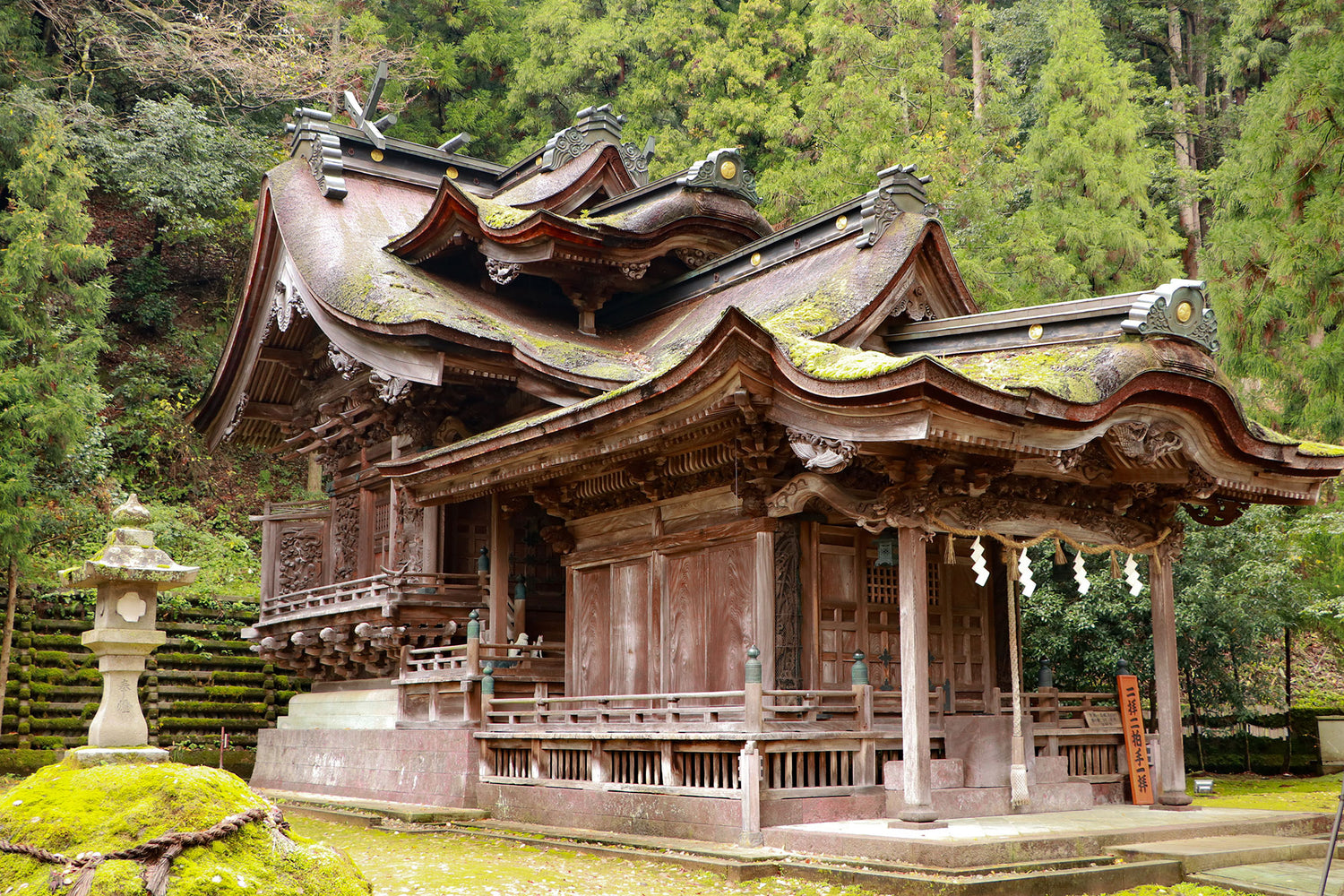
The origins of Echizen washi paper
One day 1500 years ago, a goddess appeared in the village and proclaimed, "This village is blessed with pure flowing water and abundant green trees, so from now on you should make paper and build your livelihood from it." She then carefully taught the divine method of papermaking. Since then, papermaking has continued as a way of life in this region, and this woman later came to be called "Kawakami Gozen" and is now enshrined as the deity of papermaking at Okamoto Shrine.
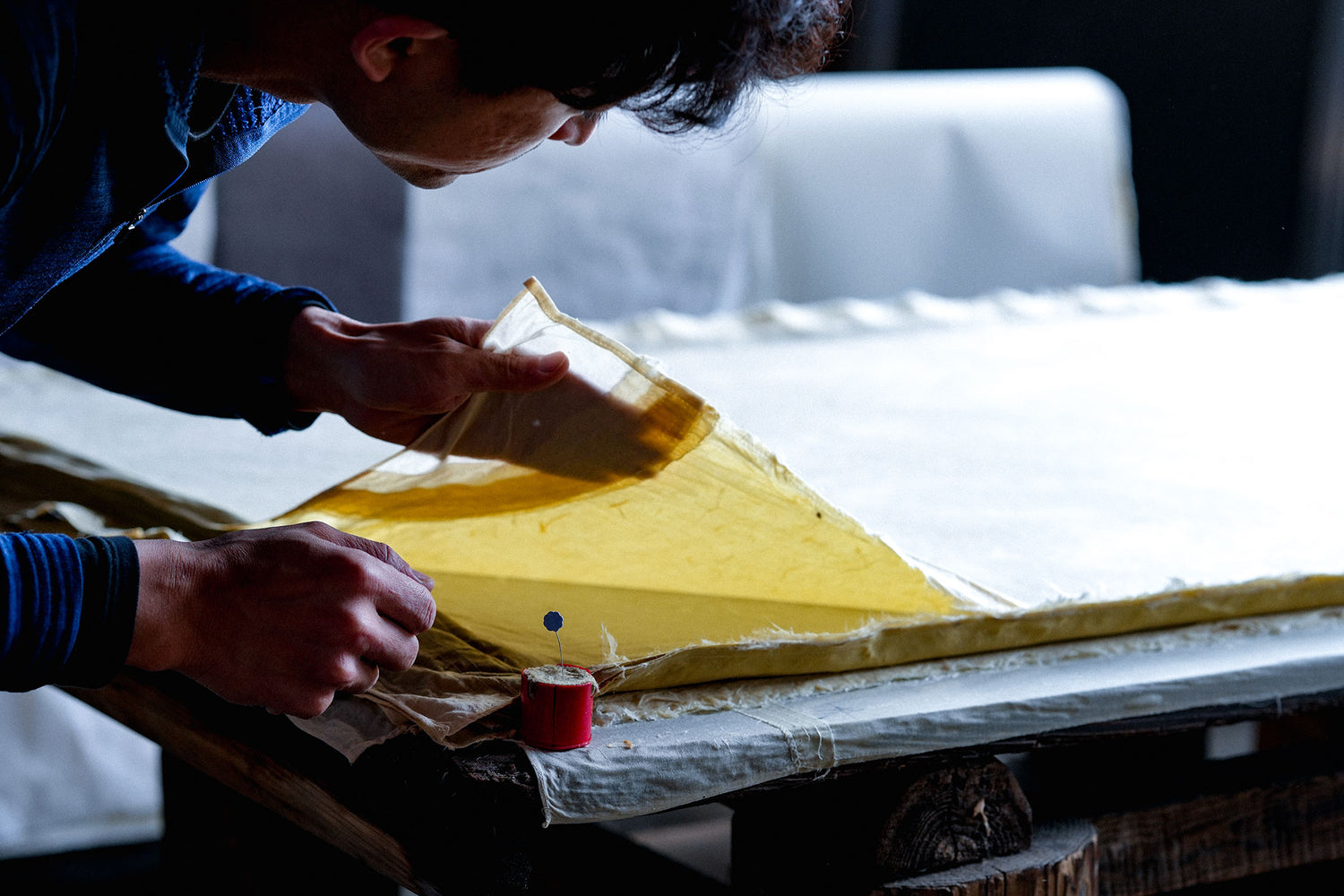
Characteristics of Echizen washi paper
In addition to its soft texture and warmth, this technique has been highly valued throughout history and is said to be the root of the papermaking and watermarking techniques used for Japanese banknotes. From the perspective of strength and durability, its applications are diverse, including its ancient use for ceremonial paper and domain currency, paper for calligraphy and painting by artists, torinoko paper used for sliding doors and folding screens, kyokushi paper developed for banknote production in the Meiji era, and fine art and craft papers.
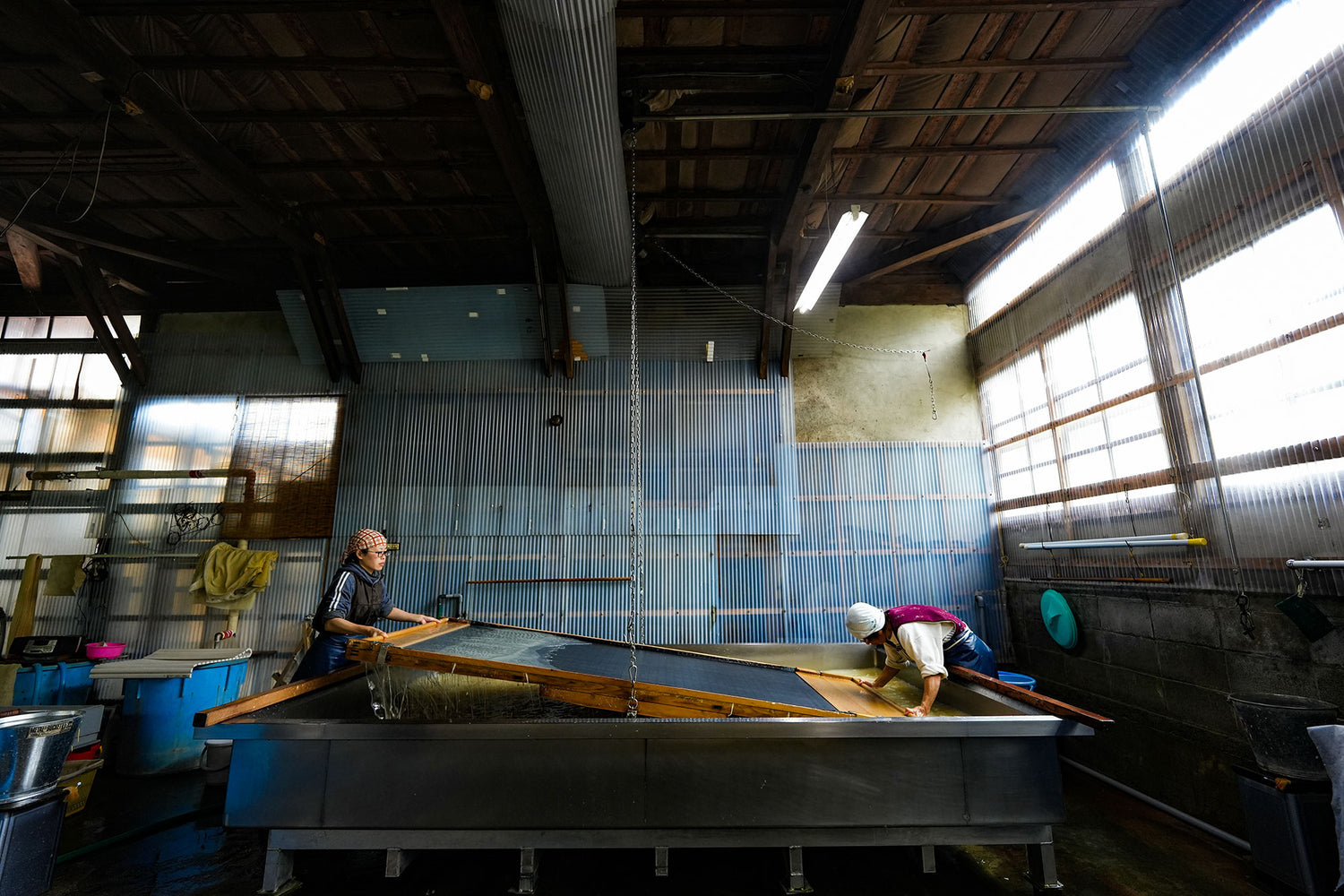
Techniques for making handmade washi paper
There are two types of papermaking techniques for handmade washi (Japanese paper). One is "vat formation," which is commonly used in Europe and America. This technique involves scooping up the paper pulp material to make paper. The other is "nagashi-zuki" (flow formation), which is a traditional Japanese washi-making technique. This process involves scooping the pulp, flowing it, scooping and flowing again... By repeating this process, layers of paper are built up to create thickness, and by moving and flowing the mold, the raw material fibers intertwine to create strong paper called "washi."
Echizen washi paper
The production area of Echizen washi (Japanese paper) is located in Echizen City, Fukui Prefecture. The verdant Goka district (Furo, Otaki, Iwamoto, Shinzaike, Sadatomo), where traditional tile-roofed houses cluster in harmony with the mountain ranges behind them, is called the village of washi, and its quality and techniques are highly acclaimed. The main raw materials are bast fibers from plants such as kozo (paper mulberry), mitsumata (Oriental paperbush), and ganpi (diplomorpha). Even after 1500 years, the same materials continue to be used, preserving their distinctive texture and warmth.
Other products
-
Frustum clay pot (white glaze)
Regular price $65.00Regular priceUnit price per -
ST Mesh Dripper M (for 1 to 4 cups)
Regular price $18.00Regular priceUnit price per -
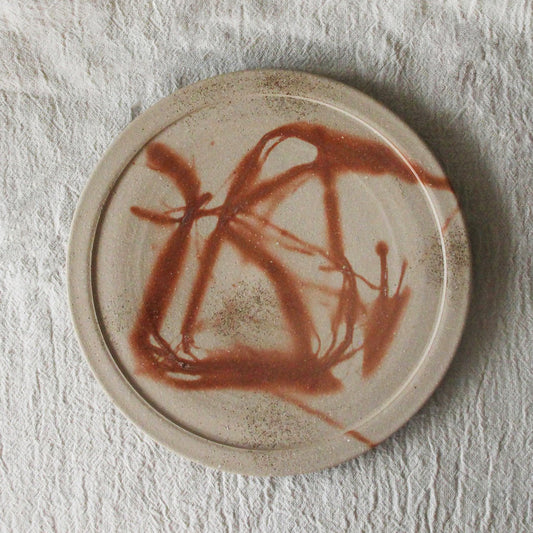 Sold out
Sold outDinner plate 27cm (Hidaski)
Regular price $53.00Regular priceUnit price per -
7 domestic palm brooms
Regular price $152.00Regular priceUnit price per

